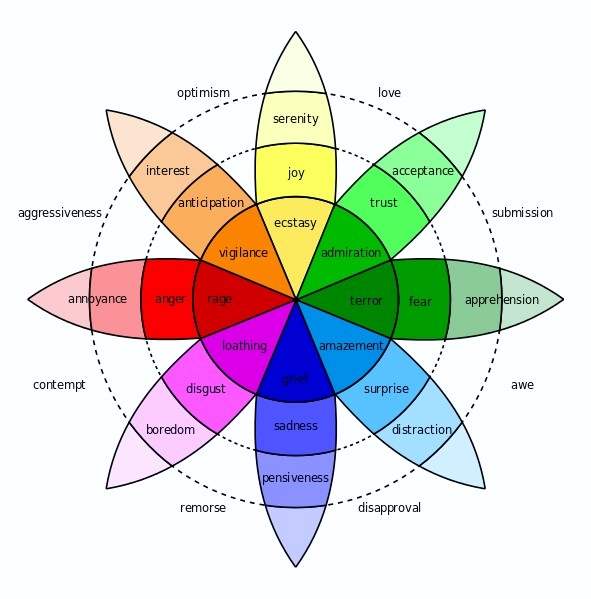Wheel of Emotions

Depression can cause emotional detachment. Because emotions influence a person’s decision-making, health, motivation and well-being, it is essential to be able to understand and manage them. American Psychologist Robert Plutchik maintained that eight primary emotions, acceptance, anger, anticipation, disgust, fear, joy, sadness and surprise, serve as the foundation for all others.
The expression and intensity of emotions differs among individuals and is influenced by social factors, including culture, gender and race. Plutchik grouped the primary emotions into four sets of polar opposites: acceptance and disgust, fear and anger, joy and sadness and surprise and anticipation. While there are more negative emotions than positive ones, both types are vital for survival.
In Plutchik’s Wheel of Emotions, each of the eight primary emotions is a different color. Those with lighter shades are a mix of primary emotions. Polar opposites appear across from one another. The wheel simplifies emotions and lets individuals visualize and verbalize them, as well as understand the combinations that created how they currently feel. (For example, love is a mixture of joy and trust, while shame is comprised of disgust and fear.) Plutchik believed that people’s actions are driven by a number of survival behaviors, including destruction, exploration, incorporation, protection, and rejection.
Adolescents, who typically have difficulty regulating their emotions, can experience frequent mood swings. Identifying what they are feeling and why they are experiencing those emotions can be a beneficial process. Consider creating an emotional journal, where they can record how they feel during the day and what they believe the causes were. Rather than trying to ignore, reject or suppress their emotions, individuals can learn how to express and share them in a constructive way. It is important to remember that emotions you refuse to allow yourself to feel, do not disappear.